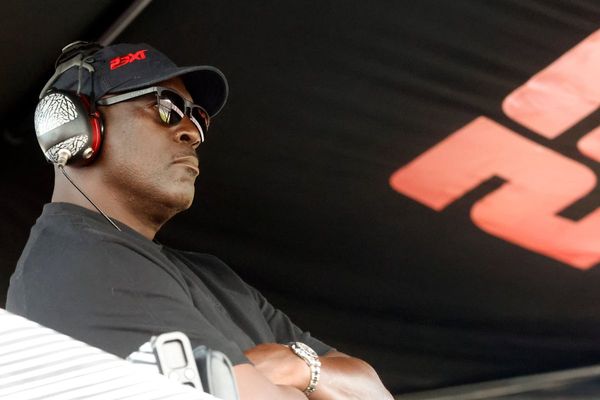
Are there two conservative political leaders with the name Tony Abbott? The author of Australia, A History: How an ancient land became a great democracy. And the one who praised Viktor Orbán in his speech at the Hungarian conference of Conservative Political Action Network, or Cpac, the same Viktor Orbán who is accused of steadily destroying democracy in Hungary.
There is one Tony Abbott but two faces. At the same Cpac conference in Hungary, he stated: “Trump 1.0 and Brexit were popular revolts that couldn’t quite drain the swamp. We have to hope that Trump 2.0 will be more successful, lest resistance to moral vanity projects be further discredited.” It’s as plain as daylight that US president Trump’s administration is trying to dismantle democracy in the US, so the question is, what is it that Abbott is hoping will be more “successful”?
The answer is white Christian nationalism, albeit an eccentric Catholic, parochial version expounded by the right kind of immigrant that Abbott extolls in his speeches at Cpac, white and British. Abbott was an acolyte of Bob Santamaria, who led the traditionalist conservative Catholic and anti-communist movement in Australia and was a founder of the Democratic Labor party, which split from the Australian Labor party in the 1950s and kept them out of power until 1972.
Frank Bongiorno, professor of history at the Australian National University, judges the book highly: Abbott “has done a good job with Australia: A History. There are places where he has done a very good job.” When I read in the introduction that Abbott attributed the term “fire-stick farming” to palaeontologist and environmentalist Tim Flannery, rather than historian Geoffrey Blainey, my suspicions were aroused. In 1975, in The Triumph of the Nomads, Blainey argued that “firestick farming” was “a symbol of their technology and often a sign of their achievement” and completely transformed the continent, an idea pursued rigorously by Bill Gammage in The Greatest Estate on Earth. Flannery, on the other hand, argued in The Future Eaters that Aboriginal people caused the extinction of the megafauna, a theory long since overturned by evidence.
I have several theories about the blend of fact and error, evidence and myth, ideology and history that Abbott weaves together when claiming Australia as “the world’s most successful immigrant nation” with quite a few counter-arguments to follow. I dismissed the possibility that the book was written by AI or by volunteers at the Ramsay Centre for Western Civilisation or the Institute of Public Affairs.
Blainey wrote the congratulatory preface, and I returned to this to try to understand the contradictions disguised in some “very good” history. There is indeed some “very good” historical writing in this book. Yet I was left asking why, when it sits alongside sloppy rhetorical arguments that are not entirely supported by the facts.
In concluding his chapter on the 1980s, when the second greatest mining boom created great wealth accompanied by financial incompetence and crime, and the rise of female entrepreneurs and an Aboriginal middle class, he writes: “This was the new Australia, becoming less convinced about its British foundation and increasingly celebrating its immigrant character.”
Yet, just two pages into his chapter on the emergence of conflicts about multiculturalism and immigration in the 2000s, he cites the FitzGerald report, Immigration – A Commitment to Australia. The recommendation Abbott lauds is this: “linking the grant of citizenship with a declaration to respect the fundamental principles and institutions in Australian society”. This is followed by Newspoll data from August 1988: “77 per cent of respondents believed that Asian migration should be slowed.” In a 1984 speech at a Rotary conference in Warrnambool, Blainey argued that the pace of Asian immigration was too high and not supported by most Australians.
The “Blainey Debate” continues today and is polarised broadly into two camps: those opposed to immigration of non-whites, multiculturalism and non-whites in general, and those who support an immigration policy that is non-racist and a multicultural Australia.
The opposing street protest camps on the streets on Sunday-last represent the extremes of this national argument, the March for Australia flag-bearing mob versus the anti-racist mob.
Abbott slips and slides with the term “immigrants” but which immigrants are never identified, except by their absence from grand notions of British traditions. This is exactly the intent though: to make the case for “the most successful immigrant nation” while constantly referencing its British roots, as FitzGerald did, as the reason for this valorised success. By cleverly recounting a “good”, even “very good” account of Australia’s history, even with its many flaws and overreach, the assertions he makes at Cpac conferences around the globe, in London, Hungary and Brisbane, appear reasonable. They are repeated in almost statesman-like language in Chapter 18, “Drifting Backwards”.
His account of the many years of debate on constitutional recognition of Indigenous Australians, which, for a brief moment in our history, he deviously supported, is studded with half truths and alternative facts. He concludes, in the style of Steve Bannon: “Half a century on from the Indigenous referendum in which 90 per cent had voted for equality, this time, just over 60 per cent ultimately voted against inequality.” He then derides “official enthusiasm for acknowledging ‘country’ on every official occasion – as if it belongs more to some of us than to all of us”.
This is not just a misunderstanding of the fact that the traditional country of a specific Aboriginal group belonging to a limited area is what is being acknowledged, not the entire territory within the Australian national boundaries, but a deliberate and devious recasting of Welcome to Country as an inherently divisive and unpatriotic ritual.
Then he goes on to complain about “flying the Indigenous flag co-equally with the national one – as if the flag of some of us has the same status as the flag of all of us”. This too is a devious reversal of reality: section 5 of the Flags Act 1953 deals with flags other than the red and blue ensigns: “The Governor-General may, by Proclamation, appoint such other flags or ensigns of Australia as he or she thinks fit.” The Australian Aboriginal flag and Torres Strait Islander flag were proclaimed flags of Australia under section 5 of the Flags Act 1953 on 14 July 1995, another fact referred to repeatedly in the long list of court findings on the matter, Senate inquiries and civic studies texts. So, two flags are often hung on either side of the national flag, not one, as Abbott states. And neither of them has the status of the national flag.
More facts undermine the cheap argument peddled here; there were many Australian flags and confusion about the correct use of the red and blue ensigns until, in 1951, King George VI endorsed the Australian government’s recommendation to use the commonwealth blue ensign as the Australian national flag.
Like so much in the rhetorical sections of the book, common but mistaken beliefs, such as Abbott’s views on acknowledging “country” and the Aboriginal and Torres Strait Islander flags, are not supported by historical facts or easily accessible public records. In Chapter 1, “An Enlightened Beginning”, Abbott slyly cites the late Prof Lyndall Ryan and Dr WEH Stanner, and other scholars reviled by the rightwing touts, notably Keith Windschuttle, whose similarly cunning tome, The Fabrication of Aboriginal History, argued that there were few massacres and Aboriginal deaths were caused by disease, a nonsense belief that the right still clings to. Abbott cites Ryan and other rigorous scholars precisely because the evidence is now overwhelming. There were hundreds of massacres, recorded and in the public domain, and there were thousands of Aboriginal people murdered by the colonists, and, in many cases, the names of the murderers are recorded.
If we check Abbott’s political stance on “patriotism”, “values”, “democracy” and other concepts that slippery political manoeuvres have devalued, by turning to his Cpac speeches, the Trumpist intent is plain to see. We have not forgotten that Warren Mundine chaired Cpac in Australia, nor that in 2015, on a visit to Kalgoorlie, Abbott said that then Western Australia premier, Colin Barnett, was right to close nearly half the state’s 274 remote communities. He said at the time: “What we can’t do is endlessly subsidise lifestyle choices if those lifestyle choices are not conducive to the kind of full participation in Australian society that everyone should have.”
Lifestyle Choices would be a more accurate title for this purported defence of democracy, one that does not include Indigenous Australia in any meaningful way. It is intended to become the style manual for the March for Australia types, providing them with a thesaurus of terms and factoids to defend their Dad’s Army version of our nation.
Marcia Langton AO is a Yiman and Bidjara woman from Queensland. She is a professor at The University of Melbourne.







